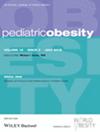Observational studies consistently indicate an association between early-life body mass index (BMI) and several cardiovascular diseases (CVDs). However, the causal relationship remains uncertain. The primary objective of this study was to assess the causal relationship between early-life BMI and six types of CVDs using the Mendelian Randomization (MR) approach.
The dataset for this study was derived from large-scale, summary-level Genome-Wide Association Studies. Specifically, the following datasets we used, early-life BMI (n = 61 111, age = 2–10), heart failure (HF) dataset (n = 977 323), atrial fibrillation (AF) dataset (n = 1 030 836), coronary artery disease (CAD) dataset (n = 184 305), peripheral artery disease (PAD) dataset (n = 243 060), deep venous thrombosis (DVT) dataset (n = 1 500 861) and myocardial infarction (MI) dataset (n = 638 000). Multiple MR methods were utilized to evaluate the causal relationship between exposure and outcomes, accompanied by sensitivity analysis.
Early-life BMI positively correlates with the risk of developing the six distinct CVDs included in this study. Specifically, elevated BMI during childhood is associated with a 31.9% risk for HF (Odds ratio [OR] = 1.319, 95% CI [1.160 to 1.499], p = 2.33 × 10−5), an 18.3% risk for AF (R = 1.183, 95% CI [1.088 to 1.287], p = 8.22 × 10−5), an 14.8% risk for CAD (OR = 1.148, 95% CI [1.028 to 1.283], p = 1.47 × 10−2), a 40.5% risk for PAD (OR = 1.405, 95% CI [1.233 to 1.600], p = 3.10 × 10−7) and 12.0% risk for MI (OR = 1.120, 95% CI [1.017 to 1.234], p = 2.18 × 10−2). Interestingly, the risk for deep venous thrombosis only increased by 0.5% (OR = 1.005, 95% CI [1.001 to 1.008], p = 2.13 × 10−3).
Genetically inferred early-life BMI is significantly associated with six distinct CVDs. This indicates that elevated early-life BMI is a significant risk factor for multiple cardiovascular disorders.


